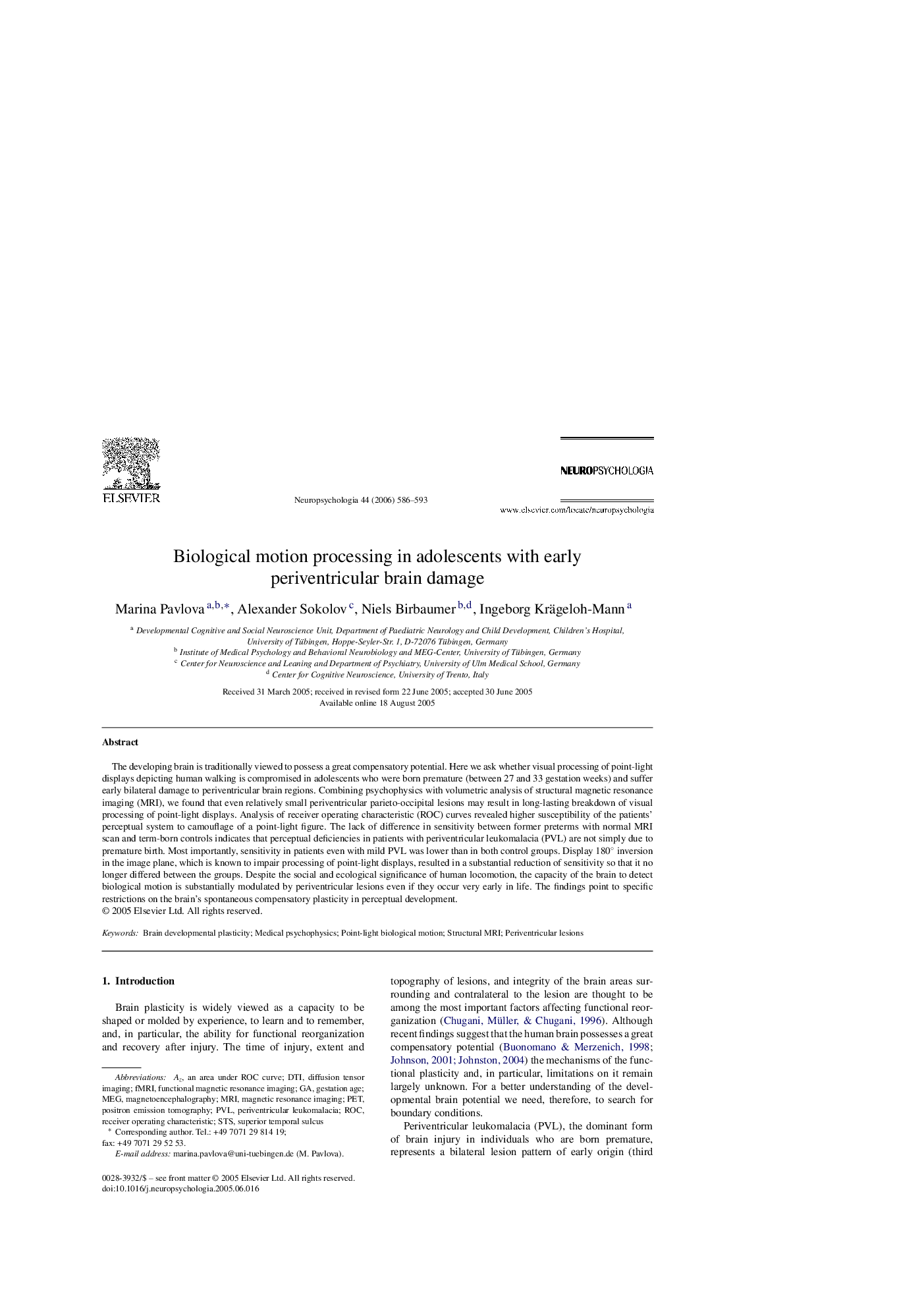| کد مقاله | کد نشریه | سال انتشار | مقاله انگلیسی | نسخه تمام متن |
|---|---|---|---|---|
| 945884 | 925819 | 2006 | 8 صفحه PDF | دانلود رایگان |

The developing brain is traditionally viewed to possess a great compensatory potential. Here we ask whether visual processing of point-light displays depicting human walking is compromised in adolescents who were born premature (between 27 and 33 gestation weeks) and suffer early bilateral damage to periventricular brain regions. Combining psychophysics with volumetric analysis of structural magnetic resonance imaging (MRI), we found that even relatively small periventricular parieto-occipital lesions may result in long-lasting breakdown of visual processing of point-light displays. Analysis of receiver operating characteristic (ROC) curves revealed higher susceptibility of the patients’ perceptual system to camouflage of a point-light figure. The lack of difference in sensitivity between former preterms with normal MRI scan and term-born controls indicates that perceptual deficiencies in patients with periventricular leukomalacia (PVL) are not simply due to premature birth. Most importantly, sensitivity in patients even with mild PVL was lower than in both control groups. Display 180° inversion in the image plane, which is known to impair processing of point-light displays, resulted in a substantial reduction of sensitivity so that it no longer differed between the groups. Despite the social and ecological significance of human locomotion, the capacity of the brain to detect biological motion is substantially modulated by periventricular lesions even if they occur very early in life. The findings point to specific restrictions on the brain's spontaneous compensatory plasticity in perceptual development.
Journal: Neuropsychologia - Volume 44, Issue 4, 2006, Pages 586–593